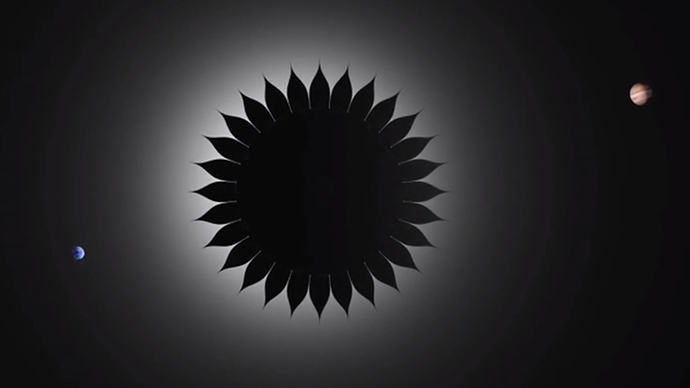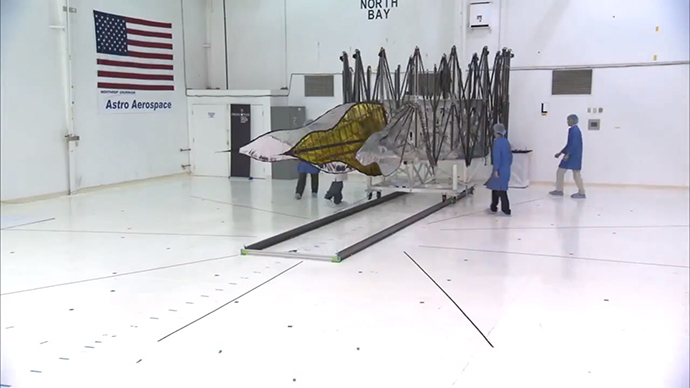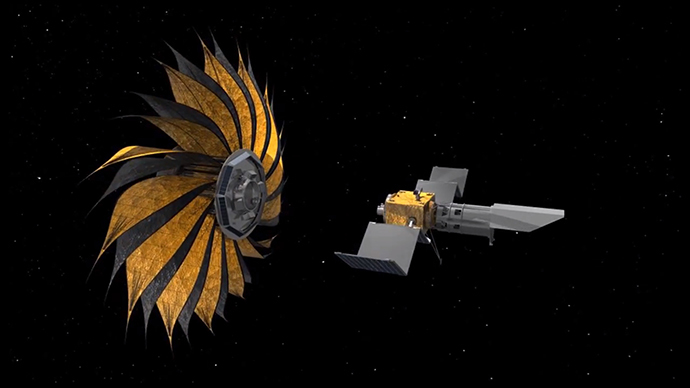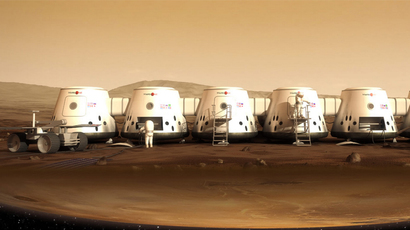NASA ‘sunflower’ project to cast shade on stars for planets photo shooting (PHOTOS)
It takes more than just a camera to shoot a photoset of a star, so NASA, in its hunt for images of exoplanets, is building a huge starshade to assist telescopes. The sunflower-shaped spacecraft will block light from bright stars.
The starshade would operate in conjunction with a space-based telescope. Controllers would position it between the telescope and the star that’s being observed. The star shade then blocks the starlight before it reaches the telescope’s mirrors.
Without the much brighter starlight, light coming from exoplanets orbiting the star would be visible enough to allow astronomers to photograph them. This process is known as starlight suppression.
Without the technology, picking up the light of a dim planet from a star which is billions of times brighter is like looking for a space needle in a cosmic haystack.

But with the space sunflower astronomers could take pictures of exoplanets – planets just like our Earth – that might provide clues as to whether they support life.
“Less light bending means that the starshade shadow is very dark, so the telescope can take images of the planets without being overwhelmed by starlight, we can use a pre-existing telescope to take the pictures,” said Stuart Shaklan, the lead engineer on the project for NASA’s Jet Propulsion Laboratory.
The devil is in the detail, however, and it’s the starshade’s flower-shaped petals that make it so effective.
“The shape of the petals, when seen from far away, creates a softer edge that causes less bending of light waves,” Shaklan said.
But there is still much work to be done, if NASA is to make this idea a reality and allow them to photograph Earth-size rocky exoplanets.
“Our current task is figuring out how to unfurl the starshade in space so that all the petals end up in the right place, with millimeter accuracy,” said Jeremy Kasdin, a Princeton University researcher and principal investigator of the starshade project.

















